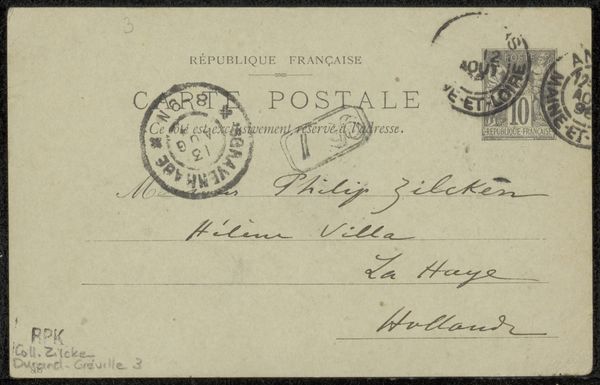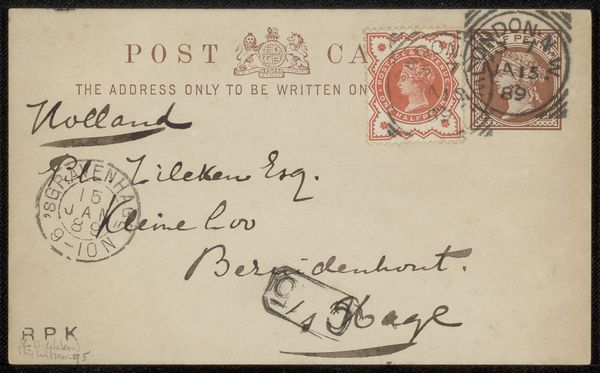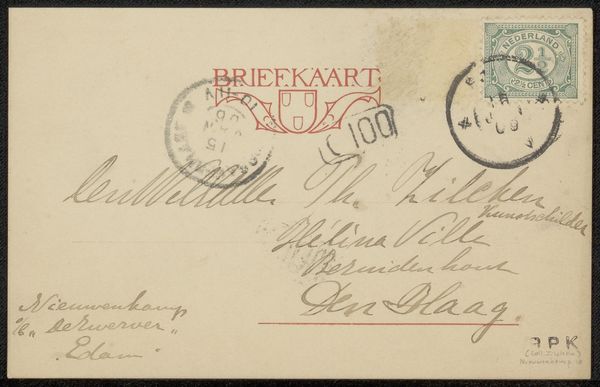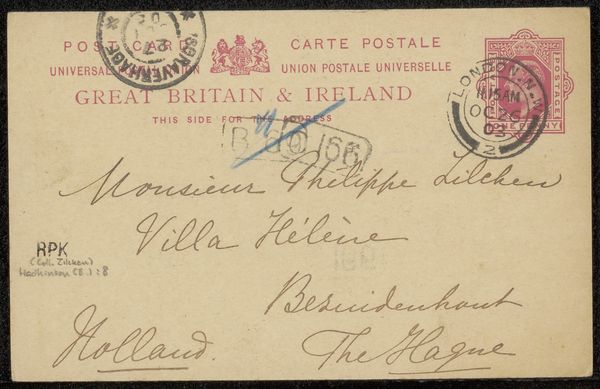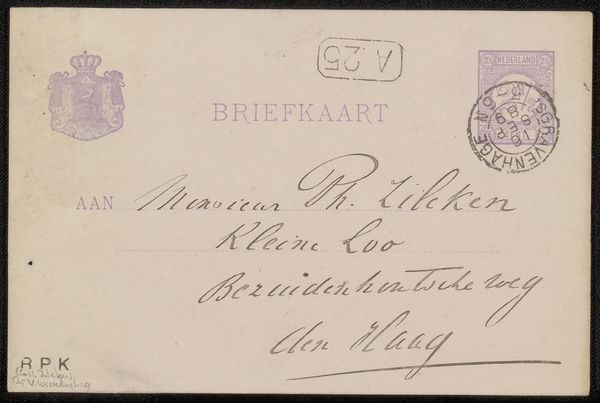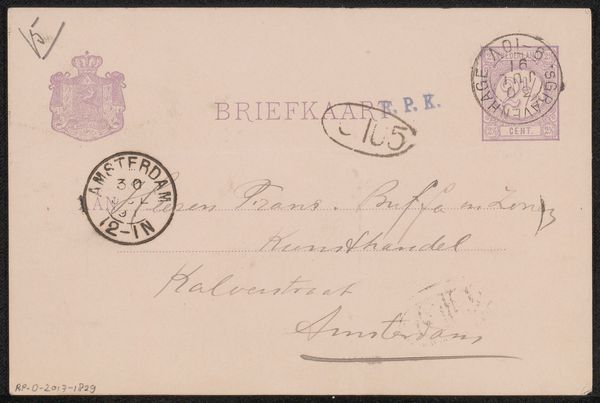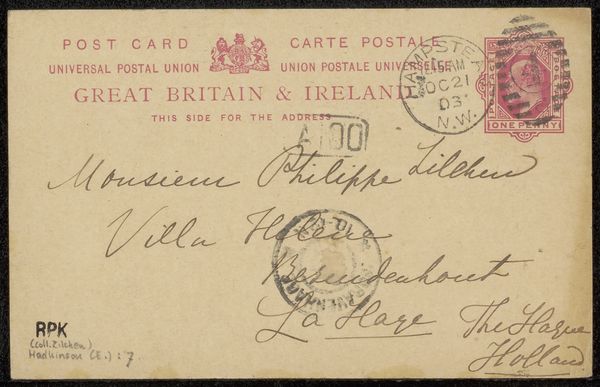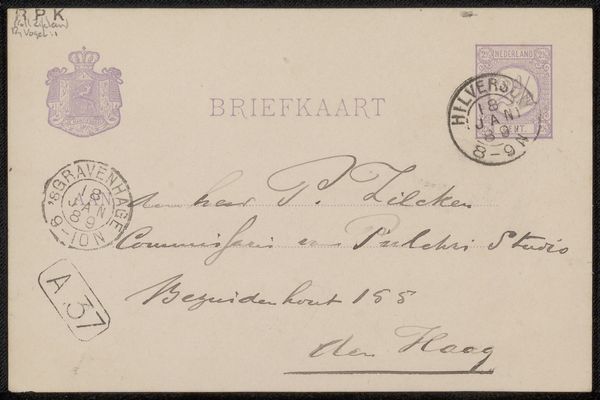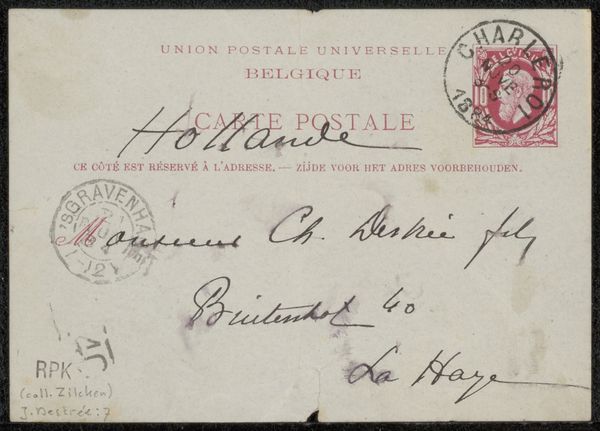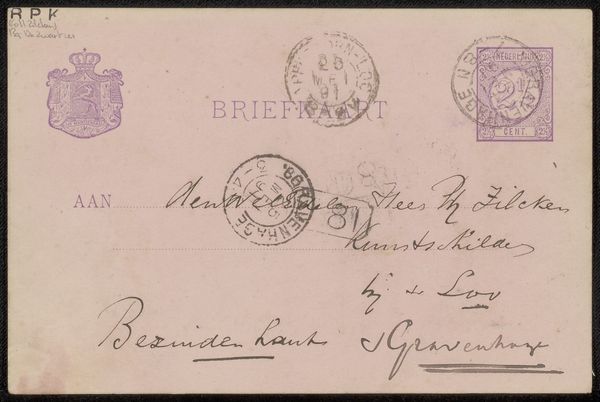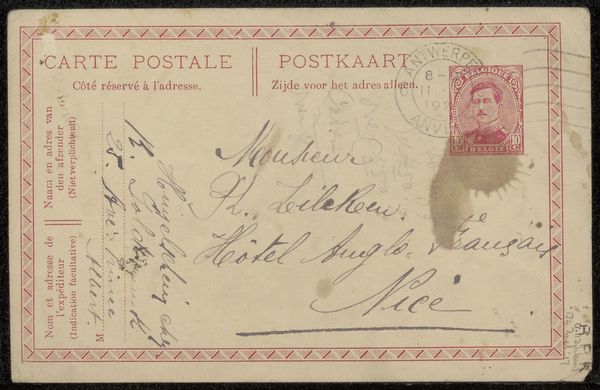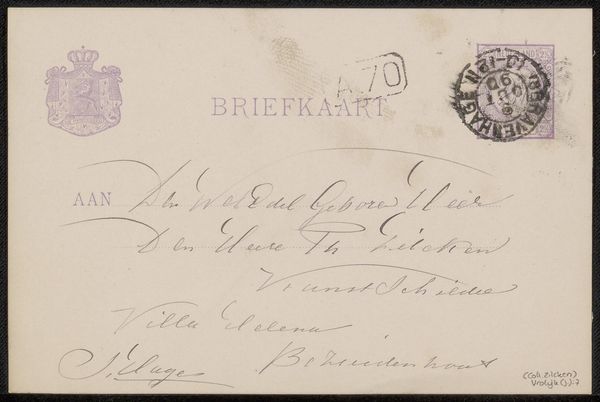
drawing, print, paper, ink
portrait
drawing
hand-lettering
hand lettering
paper
ink
genre-painting
Copyright: Rijks Museum: Open Domain
Curator: This is a fascinating object—a postcard, most likely from 1892, titled "Briefkaart aan Philip Zilcken," likely sent by artist Elbert Jan van Wisselingh. It’s ink on paper, addressed to someone in The Hague. Editor: My first impression is one of intimacy. The hand-lettering, the postmarks, the aged paper itself… it’s a tiny time capsule. The weight of history is palpable, despite its small scale. Curator: Absolutely. Consider the function of postcards then—a quick, informal way to connect. The text, I believe, offers a glimpse into the social circles of the late 19th century art world. Zilcken himself was a prominent figure. This card then symbolizes artistic networks and correspondence of the time. Editor: The design elements intrigue me too. The postal markings—the stamp, the circular postmark—add to the composition’s visual complexity, almost like collage. They interact with the elegant script to form a pleasing asymmetry. Curator: Right, and it speaks to the value placed on handwritten communication then. Think of the skill and artistry involved in calligraphy; now largely replaced. This particular style reflects societal norms—elegance, attention to detail and an emphasis on personal connection, don't you think? Editor: Yes, in stark contrast with the relative coldness of our digitally mediated communications today. It feels imbued with presence, and you get a sense of the hand and the intent of the writer that digital type erases. Curator: It does make one reflect. We interpret so much through fleeting, ephemeral messages. How will people analyze the historical context of these texts one day? Editor: A compelling question. What will survive? These physical artifacts—the paper, the ink—become vital carriers of cultural memory in their own right, even as the content recedes. Curator: It emphasizes the role of the image in retaining memories and understanding ourselves and culture throughout generations. Editor: Precisely. I find myself captivated by the interplay of formal and informal here. It’s a seemingly mundane object imbued with so much suggestive power through thoughtful examination of its physical structure. Curator: And its legacy endures beyond Wisselingh's artistic circle. That’s what draws me to such ephemera—the echoes of a life lived and shared, transmitted through the visual culture of its time.
Comments
No comments
Be the first to comment and join the conversation on the ultimate creative platform.
